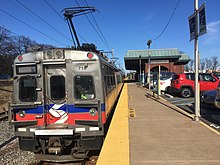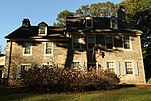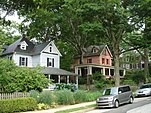Warminster Line
This article needs additional citations for verification. (August 2016) |
| Warminster Line | ||||||||||||||||||||||||||||||||||||||||||||||||||||||||||||||||||||||||||||||||||||||||||||||||||||||||||||||||||||||||||||||||||||||||||||||||||||||||||||||||||||||||||||||||||||||||||||||||||||||||||||||||||||||||||||||||||||||||||||||||||||||||||||||||||||||||||||||||||||||||||||||||
|---|---|---|---|---|---|---|---|---|---|---|---|---|---|---|---|---|---|---|---|---|---|---|---|---|---|---|---|---|---|---|---|---|---|---|---|---|---|---|---|---|---|---|---|---|---|---|---|---|---|---|---|---|---|---|---|---|---|---|---|---|---|---|---|---|---|---|---|---|---|---|---|---|---|---|---|---|---|---|---|---|---|---|---|---|---|---|---|---|---|---|---|---|---|---|---|---|---|---|---|---|---|---|---|---|---|---|---|---|---|---|---|---|---|---|---|---|---|---|---|---|---|---|---|---|---|---|---|---|---|---|---|---|---|---|---|---|---|---|---|---|---|---|---|---|---|---|---|---|---|---|---|---|---|---|---|---|---|---|---|---|---|---|---|---|---|---|---|---|---|---|---|---|---|---|---|---|---|---|---|---|---|---|---|---|---|---|---|---|---|---|---|---|---|---|---|---|---|---|---|---|---|---|---|---|---|---|---|---|---|---|---|---|---|---|---|---|---|---|---|---|---|---|---|---|---|---|---|---|---|---|---|---|---|---|---|---|---|---|---|---|---|---|---|---|---|---|---|---|---|---|---|---|---|---|---|---|---|---|---|---|---|---|---|---|---|---|---|---|---|---|---|---|---|---|---|---|---|---|---|---|---|---|---|---|---|---|---|---|
 Southbound Warminster Line train between Warminster and Hatboro stations | ||||||||||||||||||||||||||||||||||||||||||||||||||||||||||||||||||||||||||||||||||||||||||||||||||||||||||||||||||||||||||||||||||||||||||||||||||||||||||||||||||||||||||||||||||||||||||||||||||||||||||||||||||||||||||||||||||||||||||||||||||||||||||||||||||||||||||||||||||||||||||||||||
| Overview | ||||||||||||||||||||||||||||||||||||||||||||||||||||||||||||||||||||||||||||||||||||||||||||||||||||||||||||||||||||||||||||||||||||||||||||||||||||||||||||||||||||||||||||||||||||||||||||||||||||||||||||||||||||||||||||||||||||||||||||||||||||||||||||||||||||||||||||||||||||||||||||||||
| Status | Operating | |||||||||||||||||||||||||||||||||||||||||||||||||||||||||||||||||||||||||||||||||||||||||||||||||||||||||||||||||||||||||||||||||||||||||||||||||||||||||||||||||||||||||||||||||||||||||||||||||||||||||||||||||||||||||||||||||||||||||||||||||||||||||||||||||||||||||||||||||||||||||||||||
| Termini | ||||||||||||||||||||||||||||||||||||||||||||||||||||||||||||||||||||||||||||||||||||||||||||||||||||||||||||||||||||||||||||||||||||||||||||||||||||||||||||||||||||||||||||||||||||||||||||||||||||||||||||||||||||||||||||||||||||||||||||||||||||||||||||||||||||||||||||||||||||||||||||||||
| Stations | 17 | |||||||||||||||||||||||||||||||||||||||||||||||||||||||||||||||||||||||||||||||||||||||||||||||||||||||||||||||||||||||||||||||||||||||||||||||||||||||||||||||||||||||||||||||||||||||||||||||||||||||||||||||||||||||||||||||||||||||||||||||||||||||||||||||||||||||||||||||||||||||||||||||
| Website | septa.org | |||||||||||||||||||||||||||||||||||||||||||||||||||||||||||||||||||||||||||||||||||||||||||||||||||||||||||||||||||||||||||||||||||||||||||||||||||||||||||||||||||||||||||||||||||||||||||||||||||||||||||||||||||||||||||||||||||||||||||||||||||||||||||||||||||||||||||||||||||||||||||||||
| Service | ||||||||||||||||||||||||||||||||||||||||||||||||||||||||||||||||||||||||||||||||||||||||||||||||||||||||||||||||||||||||||||||||||||||||||||||||||||||||||||||||||||||||||||||||||||||||||||||||||||||||||||||||||||||||||||||||||||||||||||||||||||||||||||||||||||||||||||||||||||||||||||||||
| Type | Commuter rail | |||||||||||||||||||||||||||||||||||||||||||||||||||||||||||||||||||||||||||||||||||||||||||||||||||||||||||||||||||||||||||||||||||||||||||||||||||||||||||||||||||||||||||||||||||||||||||||||||||||||||||||||||||||||||||||||||||||||||||||||||||||||||||||||||||||||||||||||||||||||||||||||
| System | SEPTA Regional Rail | |||||||||||||||||||||||||||||||||||||||||||||||||||||||||||||||||||||||||||||||||||||||||||||||||||||||||||||||||||||||||||||||||||||||||||||||||||||||||||||||||||||||||||||||||||||||||||||||||||||||||||||||||||||||||||||||||||||||||||||||||||||||||||||||||||||||||||||||||||||||||||||||
| Operator(s) | SEPTA Regional Rail | |||||||||||||||||||||||||||||||||||||||||||||||||||||||||||||||||||||||||||||||||||||||||||||||||||||||||||||||||||||||||||||||||||||||||||||||||||||||||||||||||||||||||||||||||||||||||||||||||||||||||||||||||||||||||||||||||||||||||||||||||||||||||||||||||||||||||||||||||||||||||||||||
| Rolling stock | Electric Multiple Units | |||||||||||||||||||||||||||||||||||||||||||||||||||||||||||||||||||||||||||||||||||||||||||||||||||||||||||||||||||||||||||||||||||||||||||||||||||||||||||||||||||||||||||||||||||||||||||||||||||||||||||||||||||||||||||||||||||||||||||||||||||||||||||||||||||||||||||||||||||||||||||||||
| Daily ridership | 8,434[1]: 94 | |||||||||||||||||||||||||||||||||||||||||||||||||||||||||||||||||||||||||||||||||||||||||||||||||||||||||||||||||||||||||||||||||||||||||||||||||||||||||||||||||||||||||||||||||||||||||||||||||||||||||||||||||||||||||||||||||||||||||||||||||||||||||||||||||||||||||||||||||||||||||||||||
| Technical | ||||||||||||||||||||||||||||||||||||||||||||||||||||||||||||||||||||||||||||||||||||||||||||||||||||||||||||||||||||||||||||||||||||||||||||||||||||||||||||||||||||||||||||||||||||||||||||||||||||||||||||||||||||||||||||||||||||||||||||||||||||||||||||||||||||||||||||||||||||||||||||||||
| Track gauge | 4 ft 8+1⁄2 in (1,435 mm) standard gauge | |||||||||||||||||||||||||||||||||||||||||||||||||||||||||||||||||||||||||||||||||||||||||||||||||||||||||||||||||||||||||||||||||||||||||||||||||||||||||||||||||||||||||||||||||||||||||||||||||||||||||||||||||||||||||||||||||||||||||||||||||||||||||||||||||||||||||||||||||||||||||||||||
| Electrification | Catenary | |||||||||||||||||||||||||||||||||||||||||||||||||||||||||||||||||||||||||||||||||||||||||||||||||||||||||||||||||||||||||||||||||||||||||||||||||||||||||||||||||||||||||||||||||||||||||||||||||||||||||||||||||||||||||||||||||||||||||||||||||||||||||||||||||||||||||||||||||||||||||||||||
| ||||||||||||||||||||||||||||||||||||||||||||||||||||||||||||||||||||||||||||||||||||||||||||||||||||||||||||||||||||||||||||||||||||||||||||||||||||||||||||||||||||||||||||||||||||||||||||||||||||||||||||||||||||||||||||||||||||||||||||||||||||||||||||||||||||||||||||||||||||||||||||||||
The Warminster Line is a route of the SEPTA Regional Rail commuter rail system. It serves stations between its namesake town, Warminster, and Center City, Philadelphia. Half of the route is shared by other lines, including the Lansdale/Doylestown Line, West Trenton Line, Fox Chase Line, Chestnut Hill East Line, and Manayunk/Norristown Line. The great majority of trains continue as part of the Airport Line.
Route
The Warminster Line uses the SEPTA Main Line between Center City and Glenside, where it branches off onto its own line to Hatboro and Warminster. The tracks continue past Warminster to Ivyland and eventually to New Hope, where the New Hope & Ivyland Railroad runs heritage excursion trains.
The Warminster Line becomes a single-track line just north of Ardsley, but was once double-tracked as far north as Roslyn, the original northbound track being removed in 2010. A passing siding exists north of Willow Grove.
History

The North Pennsylvania Railroad formed the North East Pennsylvania Railroad in 1870 to construct a branch from its line at Abington (as Glenside was then known) to Hatboro. The line opened on December 18, 1872.[2] The line was further extended to Hartsville on November 9, 1874.[3] The Philadelphia and Reading Railroad, forerunner of the Reading Company (RDG), leased the parent North Pennsylvania Railroad in 1879, gaining control of the line. It extended the line to its final terminus at New Hope on April 29, 1891.[4] The Reading electrified the line, which it called the New Hope Branch, as far as Hatboro on July 26, 1931.[5]
In 1952, all passenger service ceased north of Hatboro to New Hope, with every station except Rushland, Wycombe, Lahaska and New Hope being demolished in 1954. Between 1952 and 1966, only freight trains traveled north of Hatboro to serve customers in Warminster, Ivyland, Rushland, Buckingham and New Hope. In 1966, the New Hope & Ivyland Railroad (NHIR) was launched and purchased 16 miles of track from Ivyland to New Hope. After 1966, Ivyland served as a freight interchange between RDG and NHIR and the RDG relabeled their remaining ownership of the line as the Warminster Branch. Not only did they transport freight, but also run scenic heritage excursions, originally from New Hope to Buckingham, but has been cutback to Lahaska in the 1980s. However, passenger service between Warminster and Hatboro was still inactive.
In 1971, RDG filed for bankruptcy after a variety of misfortunes; among them are increased use of trucks and a dwindling economy. The court issued a bankruptcy protection so RDG can still operate. On July 29, 1974, passenger service was reinstated after RDG completed an extension of the electrification from Hatboro (the original electrified terminus) to Warminster. Willow Grove and Warminster stations were also rebuilt in the same year. By that time, executives of RDG didn't see their debt becoming any better. Less than two years later, RDG's rolling stock, right-of-ways, interests and stock were in the hands of Conrail, also known as the Consolidated Rail Corporation, which launched operations on April 1, 1976. In 1983, SEPTA took control of the Warminster Branch.

Beginning in 1984 the route was designated R2 Warminster as part of SEPTA's diametrical reorganization of its lines. Warminster Line trains operated through the city center to the Wilmington/Newark Line (then Marcus Hook) on the ex-Pennsylvania side of the system.[6] The R-number naming system was dropped on July 25, 2010.[7] As of 2016[update] the majority of Warminster trains continue on to the Airport Line, though some terminate at 30th Street Station.[8]
On April 18, 2016, SEPTA launched positive train control on the Warminster Line, the first Regional Rail line to use the signal system which will enhance safety.[9][10]
Stations
The Warminster Line includes the following stations north of the Center City Commuter Connection; stations indicated with gray background area closed.
| Zone [11] |
Station | Miles (km) from Center City |
Date opened |
Date closed |
Connections / notes |
|---|---|---|---|---|---|
| C | Temple University |
2.1 miles (3.4 km) | SEPTA: All Regional Rail lines | ||
| 1 | Wayne Junction |
5.1 miles (8.2 km) | SEPTA: Chestnut Hill East Line, Fox Chase Line, Lansdale/Doylestown Line, West Trenton Line, | ||
| Logan | October 4, 1992[12] | Logan was one of four stations discontinued by SEPTA on October 4, 1992.[12] | |||
| Tabor | 1992 | ||||
| Fern Rock Transportation Center |
7.3 miles (11.7 km) | SEPTA: Broad Street Line, Lansdale/Doylestown Line, West Trenton Line, | |||
| Philadelphia city line | |||||
| 2 | Melrose Park |
8.4 miles (13.5 km) | SEPTA: Lansdale/Doylestown Line, West Trenton Line | ||
| Elkins Park | 9.2 miles (14.8 km) | SEPTA: Lansdale/Doylestown Line, West Trenton Line, | |||
| 3 | Jenkintown–Wyncote | 10.8 miles (17.4 km) | SEPTA: Lansdale/Doylestown Line, West Trenton Line, | ||
| Glenside | 11.9 miles (19.2 km) | SEPTA: Lansdale/Doylestown Line, | |||
| Ardsley |
13.0 miles (20.9 km) | ||||
| Roslyn |
14.2 miles (22.9 km) | SEPTA: | |||
| Crestmont |
15.4 miles (24.8 km) | ||||
| Willow Grove | 16.2 miles (26.1 km) | SEPTA: | |||
| Fulmor | 18.1 miles (29.1 km) | November 10, 1996[13] | |||
| Hatboro | 18.6 miles (29.9 km) | ||||
| Warminster |
20.1 miles (32.3 km) | 1974 | SEPTA: Bucks County TMA: | ||
Ridership
Between FY 2008–FY 2014 yearly ridership on the Warminster Line has remained steady around 2.5 million.[1]: 94 [15][16][17][18][19][20]
References
- ^ a b "Fiscal Year 2016 Annual Service Plan" (PDF). SEPTA. June 2015. Retrieved August 13, 2016.
- ^ "North Pennsylvania Railroad". American Railroad Journal. XXX (22): 675. May 30, 1874.
- ^ "North Pennsylvania Railroad". American Railroad Journal. XXXI (28): 6. June 5, 1875.
- ^ "North East Pennsylvania Railroad". Poor's Manual of Railroads: 1049. 1917.
- ^ Williams, Gerry (1998). Trains, Trolleys & Transit: A Guide to Philadelphia Area Rail Transit. Piscataway, New Jersey: Railpace Company. p. 46. ISBN 978-0-9621541-7-1.
- ^ Vuchic, Vukan; Kikuchi, Shinya (1984). General Operations Plan for the SEPTA Regional High Speed System. Philadelphia: SEPTA. pp. 2–8.
- ^ Lustig, David (November 2010). "SEPTA makeover". Trains Magazine. Kalmbach Publishing: 26.
- ^ "Warminster Line" (PDF). SEPTA. April 10, 2016. Archived from the original (PDF) on June 7, 2016. Retrieved August 21, 2016.
- ^ Laughlin, Jason (February 28, 2016). "Feds approve new SEPTA train-control safety system". The Philadelphia Inquirer. Retrieved May 22, 2016.
- ^ "Positive Train Control Update". SEPTA. April 28, 2016. Retrieved May 22, 2016.
- ^ "Warminster Line Timetable" (PDF). Philadelphia, Pennsylvania: Southeastern Pennsylvania Transportation Authority. September 10, 2017. Retrieved October 19, 2017.
- ^ a b "New Rail Schedules Set". The Philadelphia Inquirer. Philadelphia, Pennsylvania. October 2, 1992. p. 36. Retrieved October 19, 2017 – via Newspapers.com.

- ^ Dougherty, Frank (October 25, 1996). "Septa Board Cuts Service But Oppostion Is Spirited". The Philadelphia Inquirer. Retrieved October 19, 2016.
- ^ "Richboro-Warminster Rushbus" (PDF). tmabucks.com. TMA Bucks. p. January 2, 2015. Retrieved October 19, 2017.
- ^ "Fiscal Year 2015 Annual Service Plan" (PDF). SEPTA. May 2014. p. 60. Retrieved August 13, 2016.
- ^ "Fiscal Year 2014 Annual Service Plan" (PDF). SEPTA. May 2013. p. 44. Retrieved August 13, 2016.
- ^ "Fiscal Year 2013 Annual Service Plan" (PDF). SEPTA. May 2012. p. 55. Retrieved August 13, 2016.
- ^ "Fiscal Year 2012 Annual Service Plan" (PDF). SEPTA. July 2011. p. 94. Retrieved August 13, 2016.
- ^ "Fiscal Year 2011 Annual Service Plan" (PDF). SEPTA. June 2010. p. 70. Retrieved August 13, 2016.
- ^ "FY 2010 Annual Service Plan" (PDF). SEPTA. June 2009. p. 63. Retrieved August 13, 2016.





